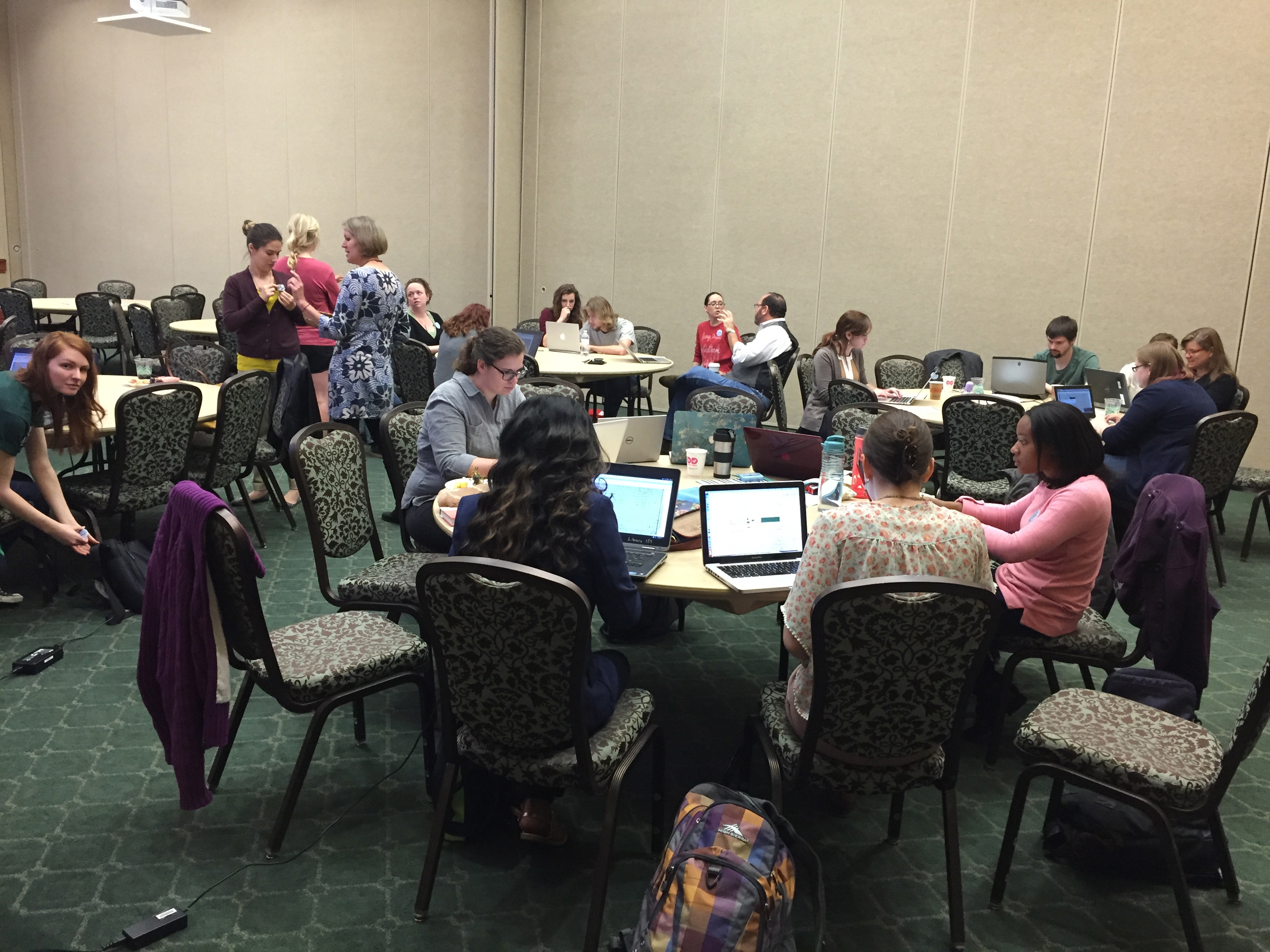[This post is part
of The Recipes Project’s annual Teaching Series. In this entry,
authors Clifton, Sindelar, and Weber share their experiences in
teaching participants in a transcribathon about angelica, an herb found
in many early modern recipe books.]
Nadia Clifton, Kailan Sindelar, and Breanne WeberIn April 2016, the Early Modern Paleography Society (EMPS) at the University of North Carolina at Charlotte hosted its first transcribathon (for more on what a transcribathon is and how to participate, see this Recipes Project post from Feb. 2015). There was no question as to whether or not we would prepare a recipe for the event, as consuming the final products of these recipes brings the manuscripts to life in a tangible way. EMPS was, at the time, transcribing the 1689 cookbook of Timothy and Mary Cruso (Folger ms X.d.24): a book written by an early modern husband and wife containing a variety of recipes, from hashing calves’ heads to preserving quinces.





To address the former question, we provided an informative handout about angelica and its medicinal uses, then discussed the plant/recipe on a panel. For the latter question, we bought a lemon cake and garnished it with angelica. The result looked quite appetizing. The remaining candied angelica and some “angelica tea” (the result of steeping angelica leaves) were also set out on the table so our participants naturally took a serving as they moved down the line. Our EMPS transcribers were much more open to tasting the angelica than we had expected, and one brave connoisseur even confidently drank the tea. We were all very impressed when she downed it without making a face.

Participants who encounter early modern recipes during a transcribathon may wonder what is done with them after they are transcribed. Cooking is both a logical and tangible next step, even (and perhaps especially) for those who are not working with the recipes professionally and/or academically. Many things about early modern recipes seem completely alien; we wonder and marvel at how and why people cooked like this. Transcribing an early modern recipe via a computer screen rather than by reading and studying the physical manuscript has the potential to create more distance between the source and the transcriber, making it easy for a transcriber to feel detached from their work. But by providing a dish prepared from a transcribed recipe, it’s possible to add a physical dimension to the transcribathon. In our case, cultivating, growing, harvesting, preparing, cooking, and then eating the angelica brought us out of the mental space our minds happily occupy and into the physical realm of our tongues and stomachs, an experience to which everyone, everywhere can relate.
*****
You can follow the Early Modern Paleography Society on Twitter @empsociety !
Nadia Clifton is currently pursuing her MA in English with an emphasis in Literature from the University of North Carolina at Charlotte, where she also works as a graduate teaching assistant for the Prospect for Success program. After graduation in May 2017, she intends to pursue an MA in Library Science. Scholarly interests include renaissance literature, magical realist theory, ecocritical theory, and the history of the book. Outside of the classroom, when she’s not reading for fun, she enjoys watching her thumb become greener every year as she experiments with growing orchids, succulents, and carnivorous plants.
Kailan Sindelar holds her MA in English with a Concentration in Technical and Professional Writing from UNC Charlotte. She works as a Technical Writer in Charlotte, NC. Her scholarly interests include ecocritical theory, feminist theory, and digital information design and usability. After work, Kailan enjoys volunteering at state parks and playing with her Miniature Schnauzers.
Breanne Weber holds her MA in English with an emphasis in Literature from the University of North Carolina at Charlotte. She is an adjunct instructor for the Department of English and the University Writing Program at UNC Charlotte and intends to begin pursuit of a PhD in 2017. Aside from early modern recipes, her scholarly interests include Renaissance publication practices, early modern English dramatic literature and poetry, and ecocritical theory.